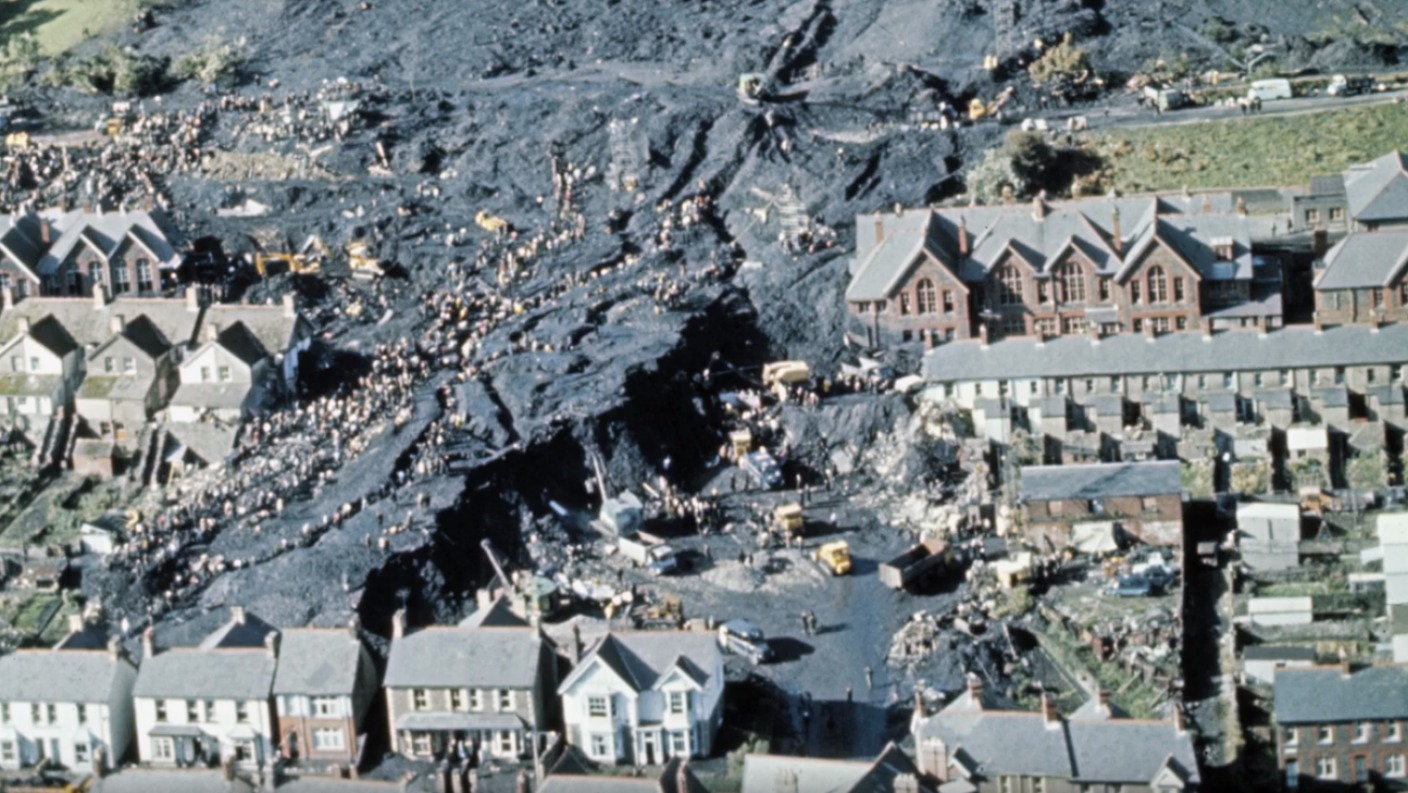Aberfan Disaster: The Tragedy Of 1966
Could a mountain of coal waste truly swallow a village? The Aberfan disaster stands as a chilling testament to the devastating power of industrial negligence, a scar on the Welsh landscape etched in the collective memory of a nation. On October 21, 1966, the unthinkable happened. A towering colliery spoil tip, looming over the unsuspecting village of Aberfan, near Merthyr Tydfil, suddenly collapsed. A torrent of liquefied coal waste, a black avalanche of unimaginable force, cascaded down the mountainside, engulfing Pantglas Junior School and nearby homes in its destructive path.
The idyllic Welsh valley, once a vibrant tapestry of close-knit community life, was transformed in an instant into a scene of unspeakable horror. The slurry, a thick, viscous mixture of coal dust, shale, and water, buried everything in its path. Children, just beginning their school day, teachers preparing lessons, families in their homes all were swept away in the terrifying surge. The scale of the tragedy was immense. One hundred and forty-four lives were extinguished that day, a staggering 116 of them children, their futures stolen in a moment of unimaginable chaos. The disaster left an indelible mark on the nation, a stark reminder of the fragility of life and the devastating consequences of unchecked industrial practices.
| Aspect | Details |
|---|---|
| Date | October 21, 1966 |
| Location | Aberfan, near Merthyr Tydfil, Wales |
| Cause | Collapse of Colliery Spoil Tip No. 7 |
| Deaths | 144 (116 children, 28 adults) |
| Impact | One of Britain's worst mining disasters; led to new legislation regarding mine waste disposal |
| Further Information | Report of the Aberfan Tribunal |
The days following the disaster were filled with scenes of frantic rescue efforts, desperate families clinging to hope, and a nation united in grief. The world watched in horror as the true extent of the devastation became clear. Rescue workers, volunteers, and even members of the community, clawed through the thick slurry, desperately searching for survivors. The images of mud-caked rescuers carrying the lifeless bodies of children from the wreckage became seared into the public consciousness, symbols of a tragedy that touched the hearts of millions.
The Aberfan disaster wasnt merely a natural catastrophe; it was a man-made tragedy, a consequence of gross negligence. The inquiry that followed revealed a series of failings, a catalogue of missed warnings and ignored concerns about the stability of the spoil tip. The National Coal Board (NCB), responsible for the tip, was found to have disregarded clear signs of danger. The tip had been built on a mountain slope above a natural spring, a recipe for instability. Despite previous slips and concerns raised by local residents, the NCB failed to act, ultimately leading to the horrific events of that fateful day. The Aberfan disaster exposed the dark underbelly of an industry that had prioritized profit over safety, a system that had failed to protect its own community.
The outpouring of grief and support in the wake of the disaster was immense. Donations poured in from around the world, a testament to the shared humanity that binds us together in times of tragedy. The Aberfan Disaster Memorial Fund, established on the very day of the disaster, received nearly 88,000 contributions, totaling 1.75 million. This fund became a vital lifeline for the bereaved families and the devastated community, a symbol of hope amidst the despair. Yet, even amidst the generosity, there were controversies, disagreements about how the funds should be used, adding another layer of complexity to the already profound grief.
The Aberfan disaster led to significant changes in legislation regarding mine waste disposal, a direct response to the failings that had contributed to the tragedy. The Mines and Quarries (Tips) Act of 1969 introduced stricter regulations for the construction and management of spoil tips, aiming to prevent similar disasters from ever occurring again. However, for the people of Aberfan, these changes came too late. The scars of the disaster, both physical and emotional, run deep, a constant reminder of the day a mountain of coal waste stole their children, their homes, and their innocence.
Fifty years on, the memory of Aberfan remains vivid. The village, rebuilt and reshaped, still bears the emotional weight of the tragedy. The memorial garden, a place of quiet reflection, stands as a poignant tribute to the lives lost. The story of Aberfan is a story of unimaginable loss, but it is also a story of resilience, of a community that came together in the face of unimaginable grief, a community that refused to be defined by tragedy. It is a story that must be told, a story that must be remembered, a story that serves as a stark warning of the human cost of negligence and the enduring power of community in the face of adversity.


